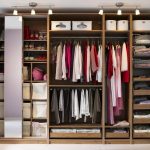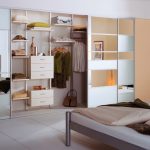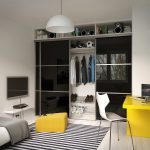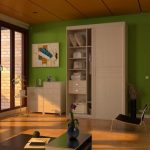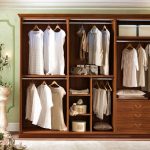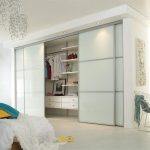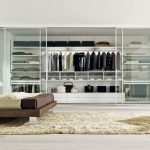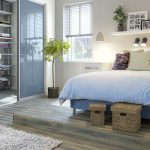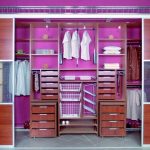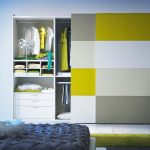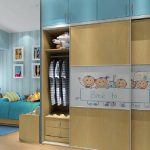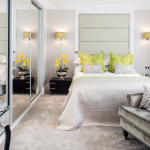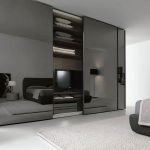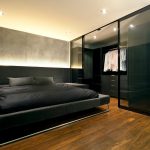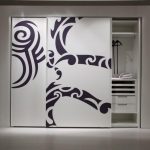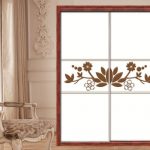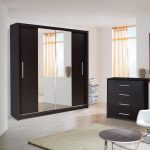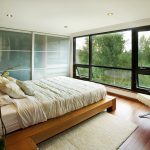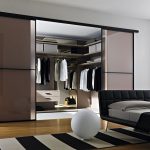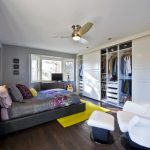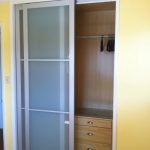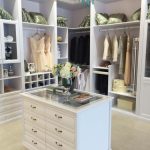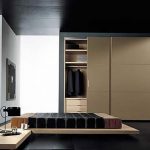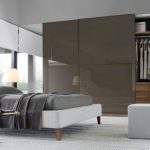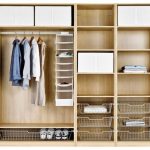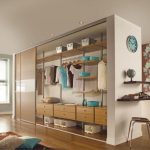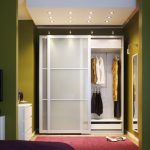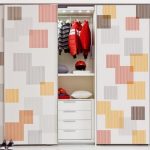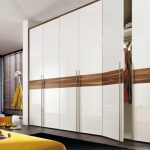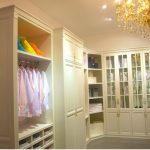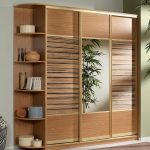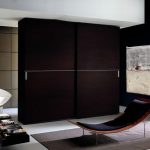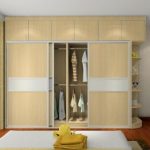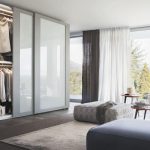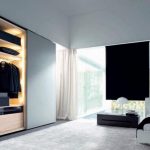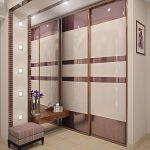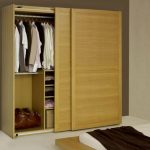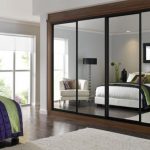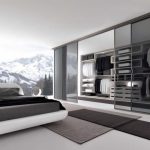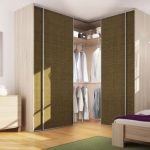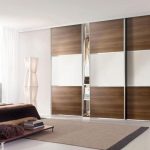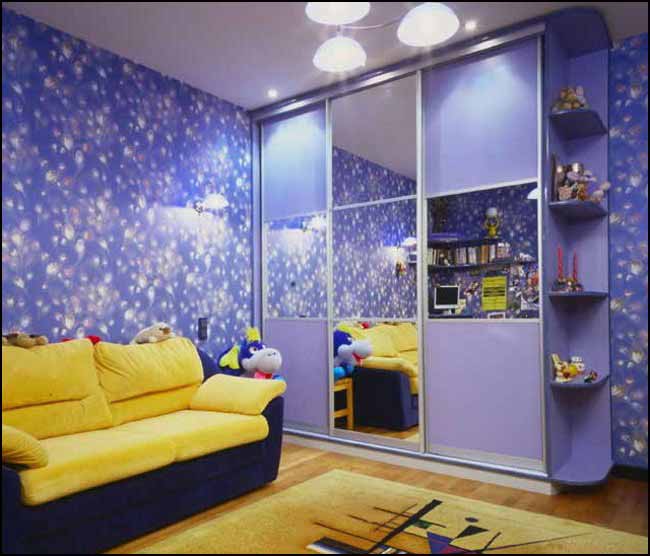 Design and tips for choosing closets
Design and tips for choosing closets
The layout of the internal space of the wardrobe compartment.
Optimal layout and rational use of space is the key to comfort. The placement of furniture in the room is a key factor.
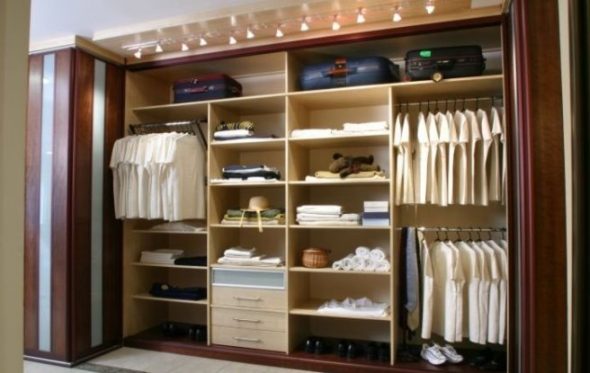
Thanks to the individual performance, the wardrobe can be organically “entered” into the places that were previously considered oversized.
But just buying a wardrobe is not enough. It is necessary that it serve not just as “furniture”, but become a functional subject and help streamline the necessary things. To do this, you need to know how to plan a wardrobe inside.

It can easily accommodate things of different lengths, and numerous shelves will help you to freely place other small things.
Content
How to organize space
First you need to decide on the location of the cabinet. It is this fact that will decide how it will look like in the end: its depth, height, width, filling.
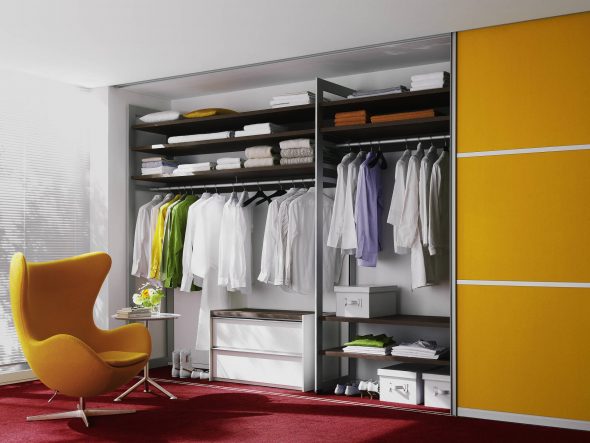
Be careful with the choice of the door extension mechanism - it should not be too noisy.
For a more specific view of the location of furniture, you can limit the things at hand that place that is intended for installation. So you can estimate the occupied space in the room and adjust the dimensions of the future furniture.

The sliding wardrobe will fit into the majority of modern styles.
If you make an overview of all components of the wardrobe, you can identify the main components:
- Plinth (bottom base);
- System (base or "support", it includes sliding devices - wheels, rails);
- Furniture panels (walls, ceiling, floor);
- Doors (can have a different look, the principle of operation is sliding);
- False panel (located in the part where it is better to hide the voids);
- The frame or the rod (located parallel to the door, or perpendicular, they hang trempelya).

Regarding the internal content, here the components are known to everyone - drawers, shelves, compartments. They can be combined and achieve the desired results.
For example, if you choose a wardrobe for the bedroom, then there are some classic components that are present in almost every version:
- Shelves. Their number can vary depending on the needs, can be located in any part of it;

This also applies to the distance between them.
- Drawers. Usually located at the bottom, depending on the destination have different depth and quantity;

Drawers are usually used as a dresser.
- Bars. For a large size can be installed from one or more rods, which are used for hanging clothes.

The bar can be for short clothes (blouses, jackets, skirts) and for long ones (coats, raincoats, dresses).
If the filling of the cabinet is planned for the hallway and dressing room, the composition will not be radically different. The only thing that can differ is the number of components depending on the purpose of the wardrobe. The lack of rods or drawers is most likely compensated for by the presence of multiple shelves and storage compartments.
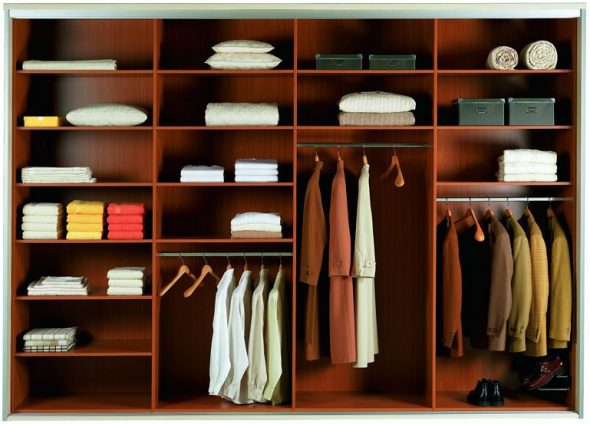
A variety of "fillings" can be selected based on personal needs.
Choosing the location of the elements, it is also worth considering which members of the family will use them.For example, if a child is given personal space for clothes and things, then you need to arrange it in an accessible place for his growth. The compartment for this can be planned as follows: at the bottom of the retractable drawer, shelf and rod for trempely. When planning a space for adult things, consider whether there will be storage of other items besides clothes (blankets, sheets, pillows, boxes of shoes, etc.).
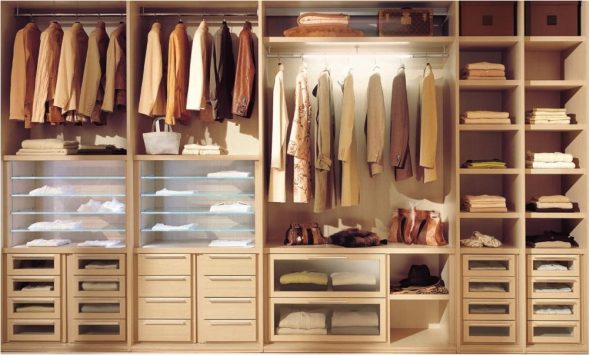
So it will become apparent necessary layout closet.
What sizes to choose
In order to decide on the dimensions and choose the optimal cabinet filling, it is better to immediately take into account the factors that will be decisive when choosing.
- Depth
If we talk about the size, then here everything is purely individual. But there are standards that are often used. It is about depth. As a rule, it is 60 cm.
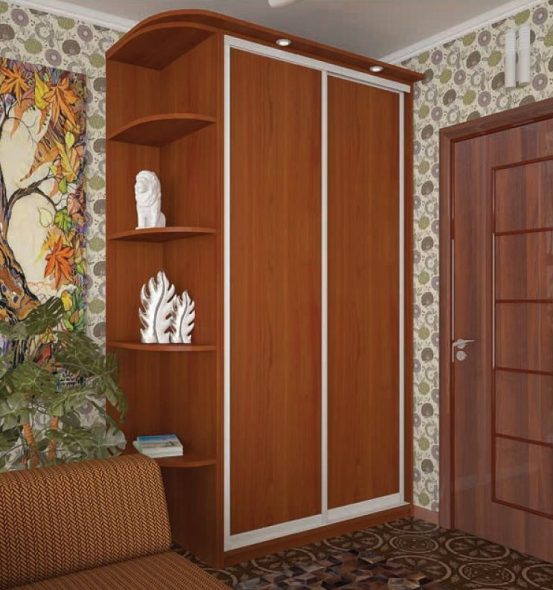
If we consider here the door system, then it increases by another 5 cm.
But what if this option does not fit? There is furniture under the order to meet all the needs of the customer in depth, width, height of the product and even in the pattern on the doors. Upon request, you can order a structure with a depth of 40 cm and it will optimally fit into the interior.
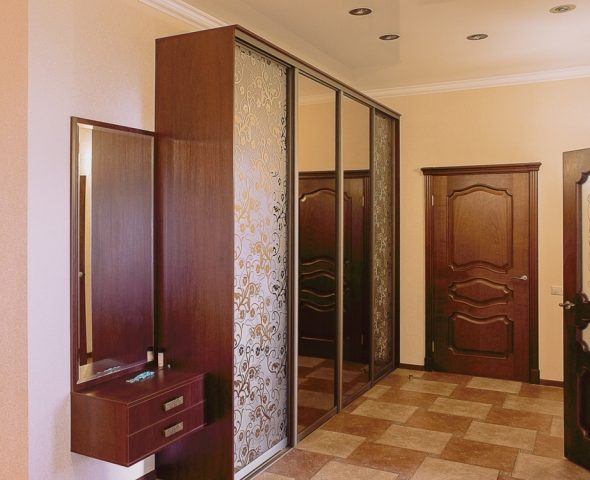
For example, suitable for the corridor, which hangs outerwear and store shoes.
- Height
The layout of the wardrobe inside with the size should be the most tailored for all households. It is necessary to take into account, above all, growth and the ability to use a ladder or chair in order to reach the highest point.
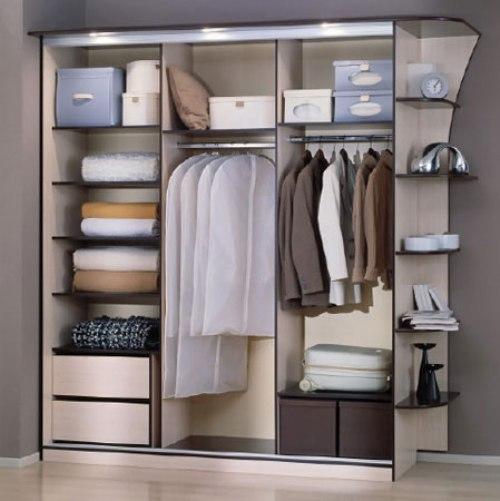
Upstairs are stored rarely used and seasonal items, bags and suitcases, boxes of shoes.
Usually even hard-to-reach places are occupied by things that are rarely used in everyday life. For practicality, many purchase a wardrobe in the ceiling.

In this case, it will not be necessary to constantly shake off the accumulated dust.
- Width
According to this criterion, there can be no rules, because the width is chosen solely on the characteristics of the room, the number of accommodated things, where it will be and the wishes of the homeowners.
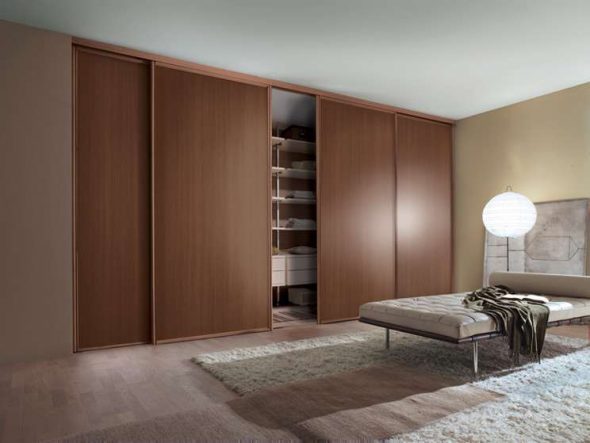
The wider the furniture, the greater the number of sections can be there.
Putting a closet in the corner, if this dictates the space of the room, is not difficult. It is necessary to know only the width of one and the second part. If the form will resemble the letter "P", then, knowing the width of all the parts, you can create a well-planned structure.
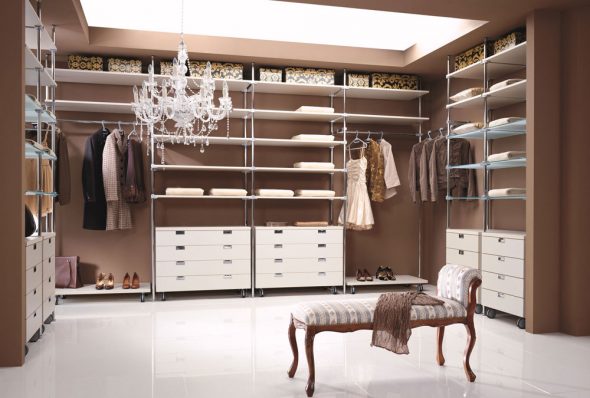
From this will depend on the number and width of sliding doors.
Do not overestimate their capabilities in size. If there is no need for a large wardrobe size and there are no plans to purchase a large number of items in the plans, then a piece of furniture that is more modest in size is worth buying.

Small wardrobes should be placed in small hallways - standard products simply do not fit there, blocking the passage.
And vice versa - for a large amount of things, they are initially considering buying a large version so that everything fits together and finds its place.
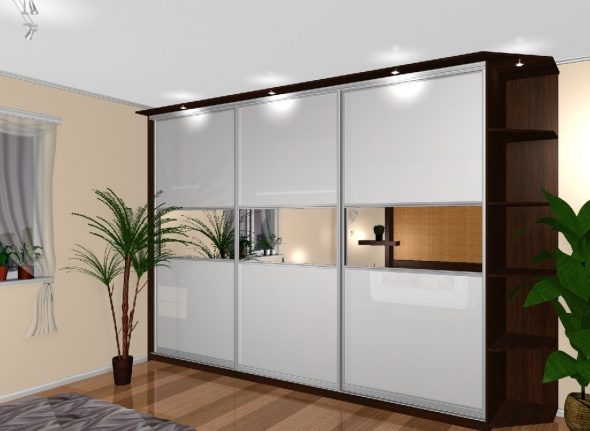
In the spacious living room or bedroom it is possible to place a large closet.
Sliding wardrobe: how to plan
For structures that will be in different parts of the room, it is necessary to select their individual internal component. Consider in more detail the basic configuration, which are offered for different locations in the room.
- Bedroom
Although the alleged presence of elements has already been described above, it will not be superfluous to clarify much.
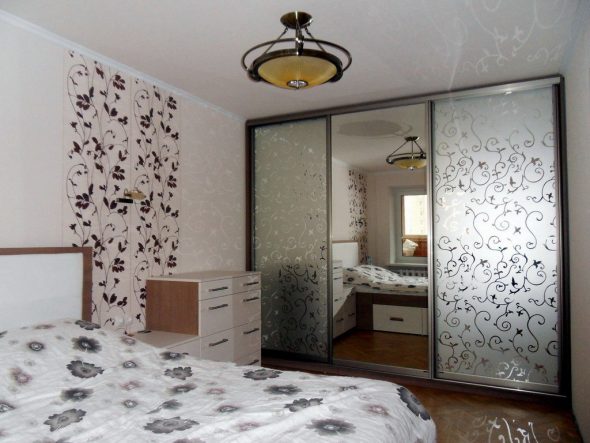
Thanks to the correctly chosen filling, this wardrobe is able to accommodate almost your entire wardrobe.
The usual filling of the closet in the bedroom should meet the following requirements:
- Availability of space for folding bedding (shelves);
- Underwear storage (drawers with divisions);
- Hanging clothes for everyday use (trempele bar, where it can be in two levels for clothes of different lengths);
- Storage accessories (drawers with divisions or shelves);
- Household "usefulness" (ironing board, iron, steamer, clipper and much more fit in the compartments between departments or in a special place reserved for this).

It can easily fit not only your belongings, but also bed linen, extra sets of pillows and blankets and even an ironing board.
- Entrance hall
Since the hallways in different houses and apartments have different shapes, width and length, then you need to select the furniture according to these features. The wardrobe system has a sliding door view, it will suit almost any type of hallway.

Here it is worth starting from the depth of the cabinet.
The hallway needs space for the following things:
- Outerwear (bar);
- Footwear (shelves, sliding systems with storage);
- Accessories (shelves, drawers);
It would be appropriate to place a mirror on one door or two.
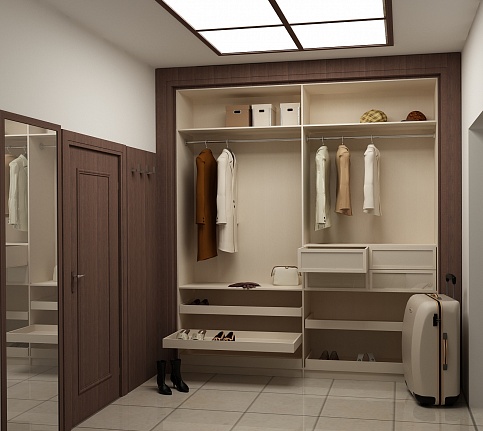
The wardrobe in the hallway is indispensable for storing clothes for each of the seasons and numerous shoes.
- Wardrobe
How to plan a wardrobe inside for a dressing room? There is already more room for imagination, because you can have anything in the dressing room in the quantities allowed by the dimensions.
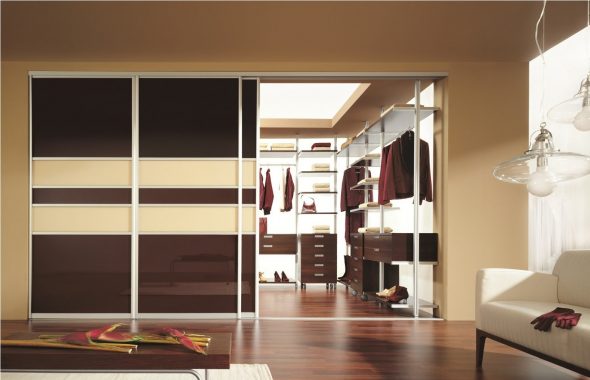
Sophisticated organization of space and storage will undoubtedly play into your hands.
Put in the "compartment" can be:
- All types of clothing, starting from underwear and ending with fur coats or jackets (use retractable designs with tick marks and rods);
- All sorts of accessories from earrings to travel bags and suitcases (retractable top shelves about 50 cm wide);
- Footwear (racks and holders);
- Headgear (shelves);
- Household things (shelves, sliding systems).
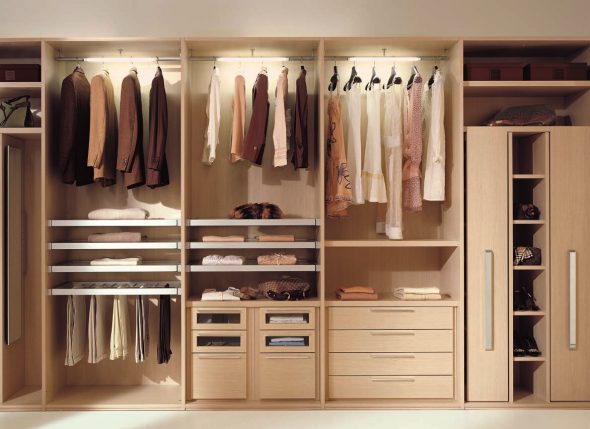
The number of shelves, sections and furniture sizes depend on the volume of internal space.
Installation
All components are made both on standard development, and by request. The first option can immediately get up to the right place, and may require an individual approach. Then the wardrobe will be made based on the wishes of the client.
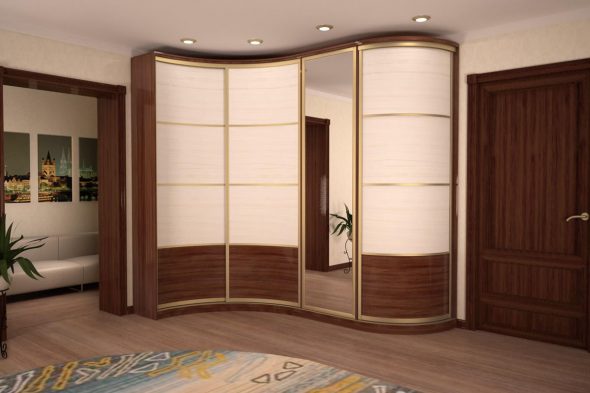
As a facade decor it is better to choose a mirror surface, at least for one of the doors.
After some time using the wardrobe, the layout inside may not meet the standards of comfort of an individual family. Then you can upgrade the existing cabinet filling by adding or eliminating some elements. To make installation, it is enough to have the necessary fittings and screwdriver. In extreme cases, you can call a specialist.
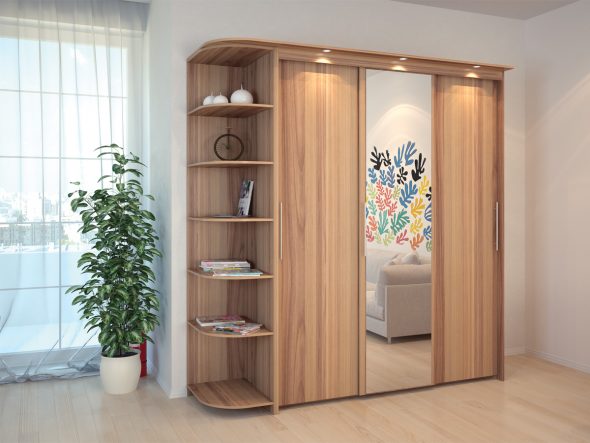
For installation use special accessories - under the elements that can move, doors, mounting rods, lights, and more.
VIDEO: Filling the closet compartment.
Cabinets coupe in the interior - 50 photo ideas:
 Design and tips for choosing closets
Design and tips for choosing closets
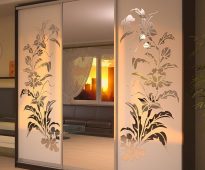 We make a comfortable wardrobe with your own hands
We make a comfortable wardrobe with your own hands
 Variants of filling wardrobe
Variants of filling wardrobe
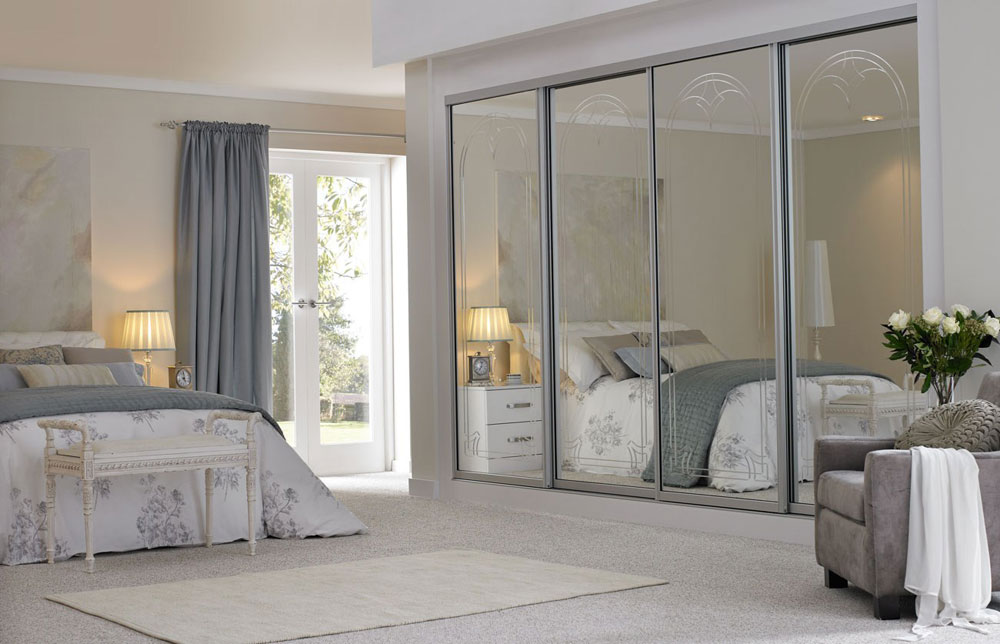 Built-in wardrobes for the bedroom.
Built-in wardrobes for the bedroom.
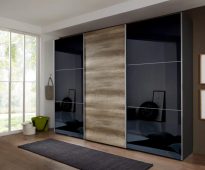 How to make the calculation of the door wardrobe
How to make the calculation of the door wardrobe
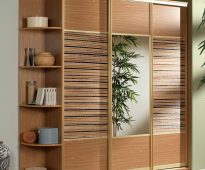 We use wardrobes in the interior as a complete wardrobe
We use wardrobes in the interior as a complete wardrobe
